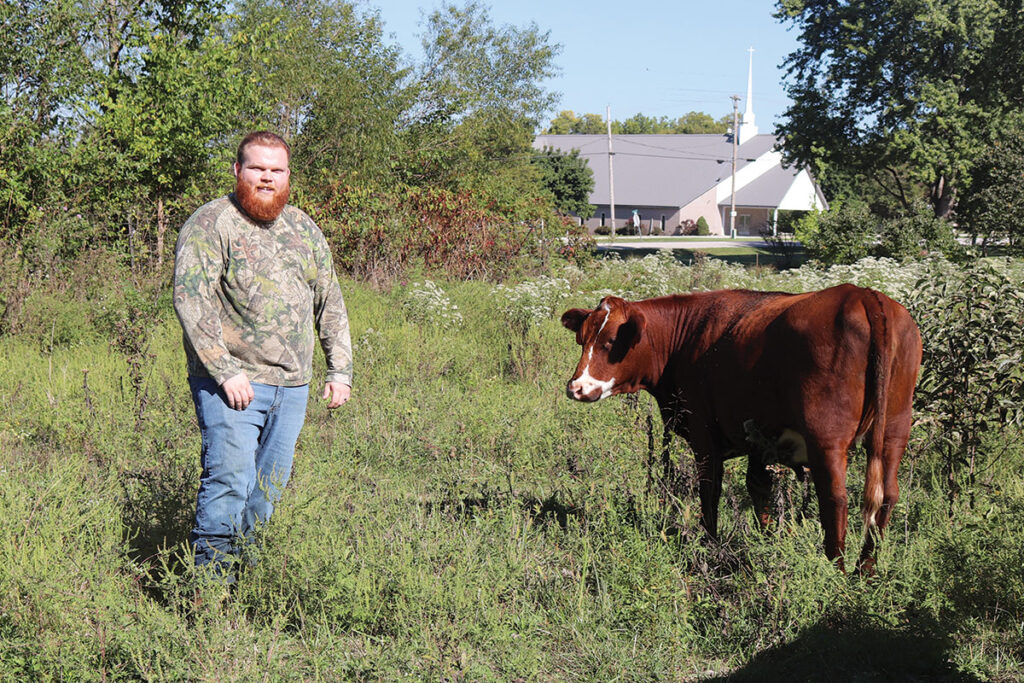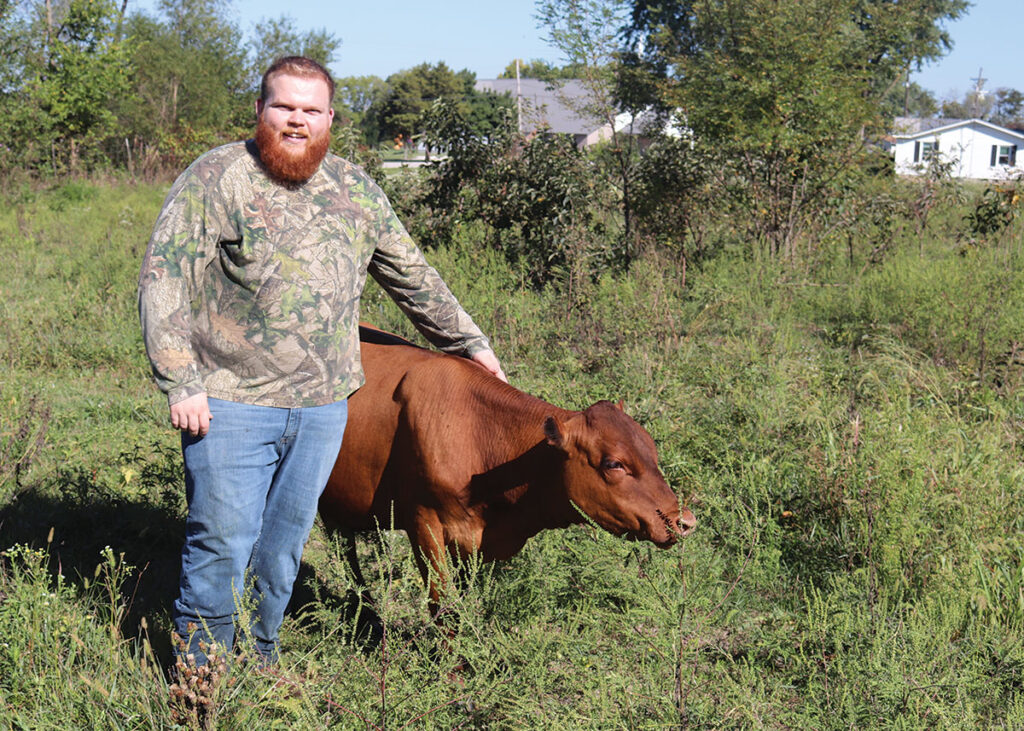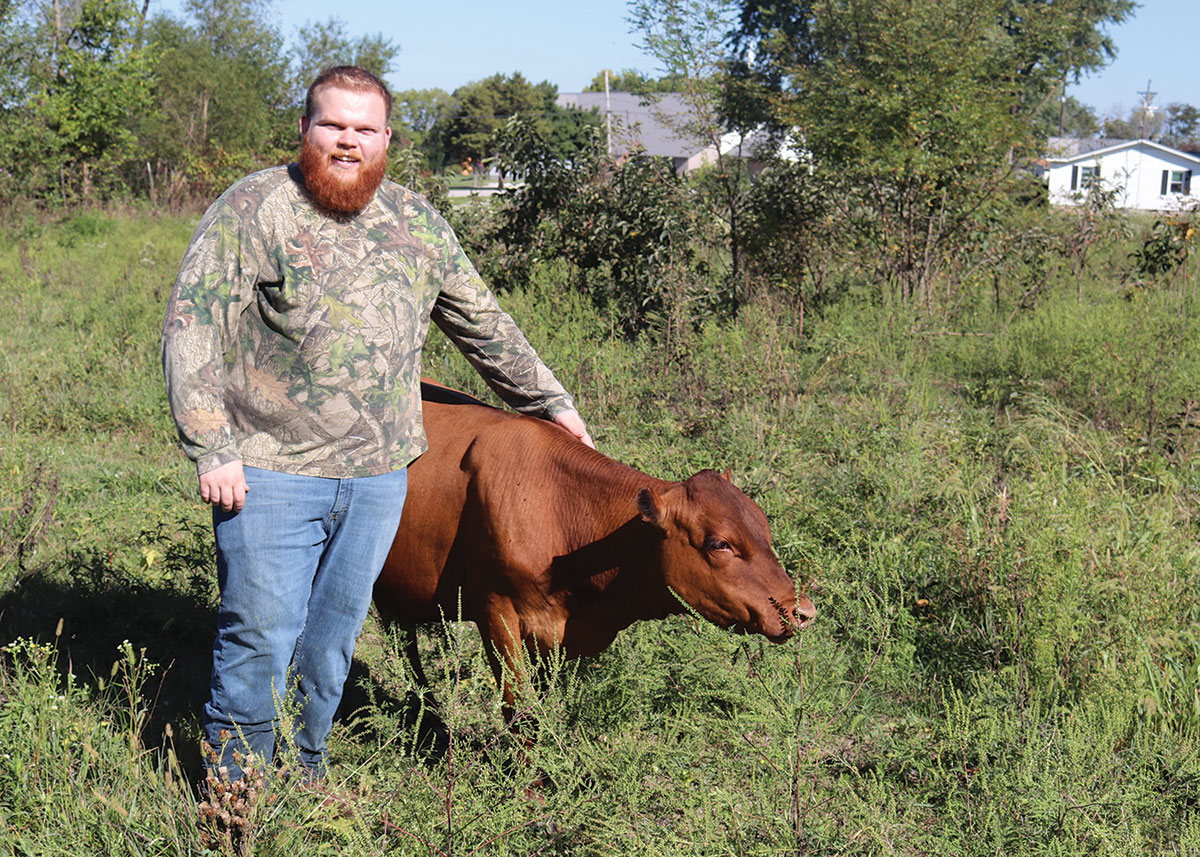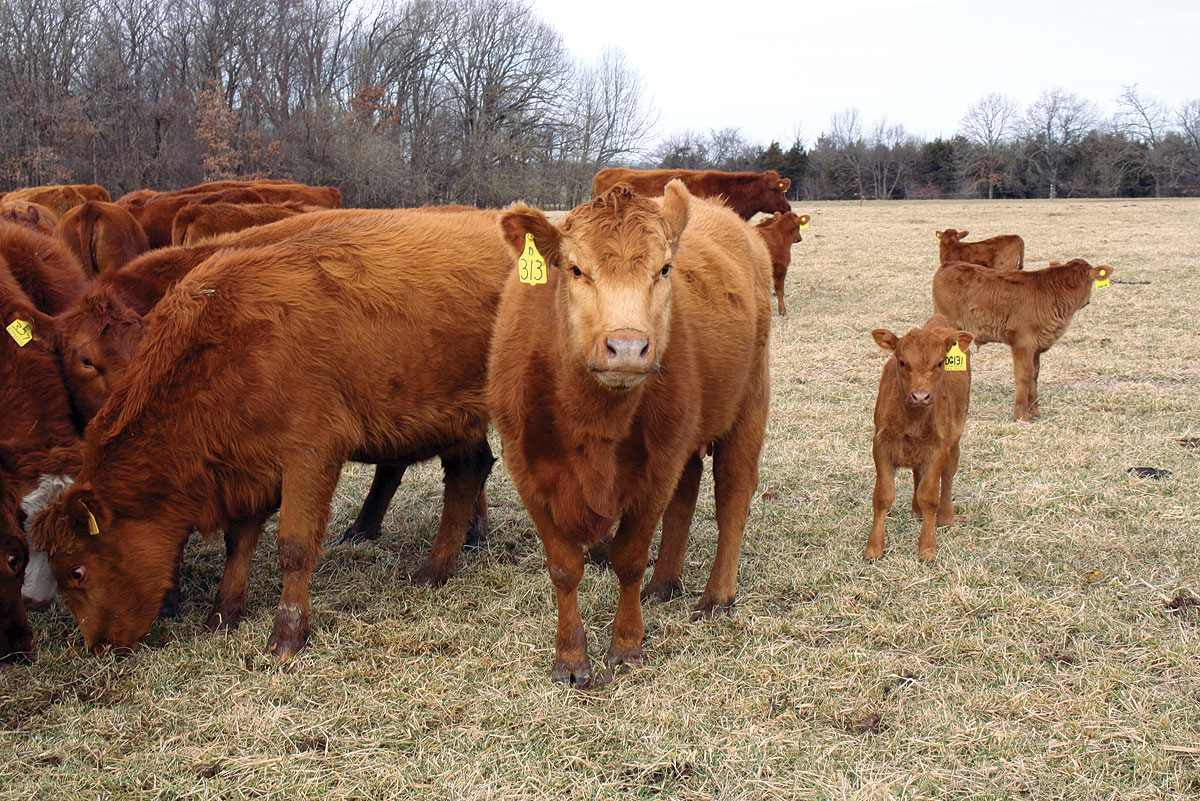
The Gonnam family is building a cattle herd and a grass-finished beef market
BUFFALO, MO. – Even though Chance Gonnam grew up in an Illinois farming community and has a degree in ag business, becoming a cattle producer was never part of the plan.
“I had to raise pheasants in FFA for my SAE (Supervised Agriculture Experience) and I didn’t want to do it,” Chance said, adding most of his ag experience is related to commodities and crops. “I never learned anything about pasture management. After high school, my ag teacher told me to go into ag business because you were guaranteed a job. I was like, I need a job in the next step in life.”
For a time, Chance and his wife Samantha followed a vegan diet.
“I bought into the propaganda,” Chance said with a laugh. “Cows were bad and were killing the environment. I have always loved deer hunting and have eaten meat my whole life, but I bought into what was sold. We were vegan for two years, but we realized the vegan stuff isn’t any better; it’s worse for you and isn’t better for the environment.”
Instead of improving their health, the vegan diet did the opposite.
“We were going to the gym and couldn’t lift as much as we used to,” Chance explained. “There was brain fog, and I couldn’t think very clearly. You get used to being tired and lethargic all the time. We were living in Colorado and loved to hike, but we couldn’t go as far as other people. I weighed less and looked like I was in good shape, but I wasn’t.”
Today, about 80 percent of their diet is meat, thanks to friends telling them about a carnivore diet.
“It’s been a great change for our family, and we feel better,” Chance said. “My wife has thyroid problems, and it is much better for her.”
The couple discovered regenerative agriculture and the teachings of experts like Gregg Judy and decided to start a farming operation following those practices.
“I’m not against grain; I’m against the feed yard process,” Chance said.
After moving across the country to find the right place to begin their operation and raise a family, they settled onto a farm that sat idle for almost a decade south of Buffalo, Mo., about two years ago. They started with pastured Red Waddle pigs and chickens, and after nearly a year of research, they began a cattle operation.
“We wanted to be homesteaders, but after about four months, we discovered homesteaders only spend money, not make money,” Chance said. “We needed to change that.”
Chance, Samantha, and their family, which includes their daughter Priscilla and infant son Kenneth, have a small but growing herd of South Poll/Red Angus heifers.
“We wanted to keep the bank out of it as much as possible. I found someone in Springfield who had bottle babies, and if you bought 35, you got them for $30 a head. I bought 140.”
They pre-sold the dairy and dairy-cross calves, keeping 10 for their fledgling cattle business. They took the profits from selling nine of those animals to start the South Poll herd.
“I knew from the start that I wanted South Polls,” Chance said. “The idea of a smaller frame, being good on grass, heat tolerant, and having a good temperament is what sold us.”
The South Polls are pasture-based, with cattle receiving only supplemental cubes and lick mineral tubs in the winter months.
Chance incorporated a rotational grazing system for his herd, getting about a 60- to 90-day grazing cycle, but the cattle have access to most of the property at this time because of prolonged drought conditions.
“I’ve learned weeds grow really well when it’s dry,” he said. “The main goal is to get rid of the weeds. They were really bad when we came, but I’m seeing a big improvement since we started grazing.”
They have not incorporated new forages. However, the Gonnams hope to improve pastures through natural seeding by unrolling Illinois-sourced hay this winter. Family brings the hay to Missouri when they visit.
For better weed control, Chance plans to invest in a rotary cutter to clip pastures and help him reclaim more of the land.
Cattle are kept as natural as possible but do receive a blackleg vaccination and are treated in case of illness.
A portion of the farm was used for the pastured pig operation, and Chance said their pigs did a superb job of eradicating brush, but they will likely only raise enough pigs to feed their family in the future due to feed costs.
“In three to five years, we will look at doing Red Waddles again,” he explained. “We did sell them last time, but it’s just a lot of work. We also like the chicken, but they are a lot of work, too.”
The goal for the Gonnams is to get into the beef business, but it takes time to produce the grass-finished South Pole cattle they want, so they needed to find a way to start their business sooner rather than later.
“It takes 24 months to have a grass-fed beef ready,” Chance said. “Because we wanted to keep the bank out of it, we needed to find a way to monetize it.”
Where there’s a will, there’s a way, and the Gonnams found a way through a partnership with an established South Poll breeder.
“I wanted to sell beef and knew how to build a website; I just needed to learn how to sell beef,” Chance said. “We found a guy who wants to build his breeding program and has no interest in selling meat. We partnered with him and have sold 12 whole beefs in Florida, California, and other major cities where we can get top dollar for the beef.

“We make a little extra, he makes a little extra, and we can provide beef to our customers before we can grow it here on our pastures,” Chance said. “Our pastures were vacant for nine years, so we’re trying to reclaim it, graze and learn. He’s been doing it for 15 years and is putting out a solid product.”
Initially, the Gonnams finished cattle from Shaun Laub of Integrity Ranch, at their farm then sold the processed beef, but the operation is now more streamlined.
Chance handles all sales, securing USDA-inspected processing appointments and shipping. He lets Shaun know how many animals will be needed to fill orders. Beef boxes are sold in 30-pound bundles, up to a whole beef.
The partners also offer free delivery of beef to the Springfield area, eliminating shipping costs.
“[Samantha] said we could develop a local market at a lower price, and she was right,” Chance said. “We just started and we already have half a beef sold in the Springfield market. We are going to push more toward that because shipping can be a headache; one hiccup and you are out of a half a beef.”
Chance and Samantha obtained their Red Angus/South Poll females from Integrity Ranch, and have enhanced their genetics with a South Poll bull from the ranch. They will have their first calves on the ground next spring, with heifers being retained to increase the Gonnam herd.
Chance uses social media platforms like TikTok to promote beef and regenerative agriculture. He has also done some podcasts addressing the topics.
“There’s a market of people who don’t know they can buy beef from a local farmer, be it grass-fed or grain-fed,” Chance said. “We get a ton of people asking us how it works because they don’t know the process, so we’re looking to educate consumers. We’re educating the public who want to buy from the farmer but don’t know it’s possible, and the idea of buying in bulk and getting a filet mignon steak for the same price as your burger.”
On all social media platforms, Gonnam Ranch has about 100,000 followers.
“We don’t have 100,000 customers, but I have people reach out and ask if they should buy from me or their local farmer,” Chance said. “I’m cool shipping beef to Los Angeles, but if you live in rural Kentucky, find a local farmer. There’s competition, but if we focus on a local supply chain, it is better for everyone.”
The Gonnams might not have roots in the cattle industry, but they plan to change that for their children.
“The 10-year goal is to have 600 to 1,000 head so it can be a sustaining business,” Chance said. “I want it to be more like a retirement account, something more fun than the stock markets.
“Never in a million years did I see this happening. Initially, I thought we would be doing this or that in five years, but it takes a while. I’ve had to reshape what I’m doing, but I love it; this is my happy place. I love watching the cows and hearing them ripping that grass; we just sit and listen to it.”







